Northern Vietnam
Hanoi Captital
Mai Chau
Bich Dong Pagoda in Ninh Binh impresses visitors not only with its sophisticated and exquisite classical architecture, which is connected with Vietnam’s heroic history and culture, but also by its attractive natural beauty.
Let’s learn more about this beautiful place with Fola Travel in the article below!
Bich Dong Pagoda, located in the Tam Coc – Bich Dong Eco-tourism Area of the Trang An Scenic Complex, is a popular destination on Ninh Binh tours for its natural beauty and serene atmosphere.

The Bich Dong Pagoda was built in the mid-1400s on the Truong Yen limestone mountain range, with the original name “Bach Ngoc Thach Son Dong”, which means “a beautiful and pure stone pagoda like jade in an isolated mountain”.
After 600 years of history with many ups and downs, Bich Dong Pagoda has developed into an important site for the preservation of local historical and cultural values. Today, Bich Dong Pagoda welcomes a large number of tourists every year to visit, learn, and take photos.
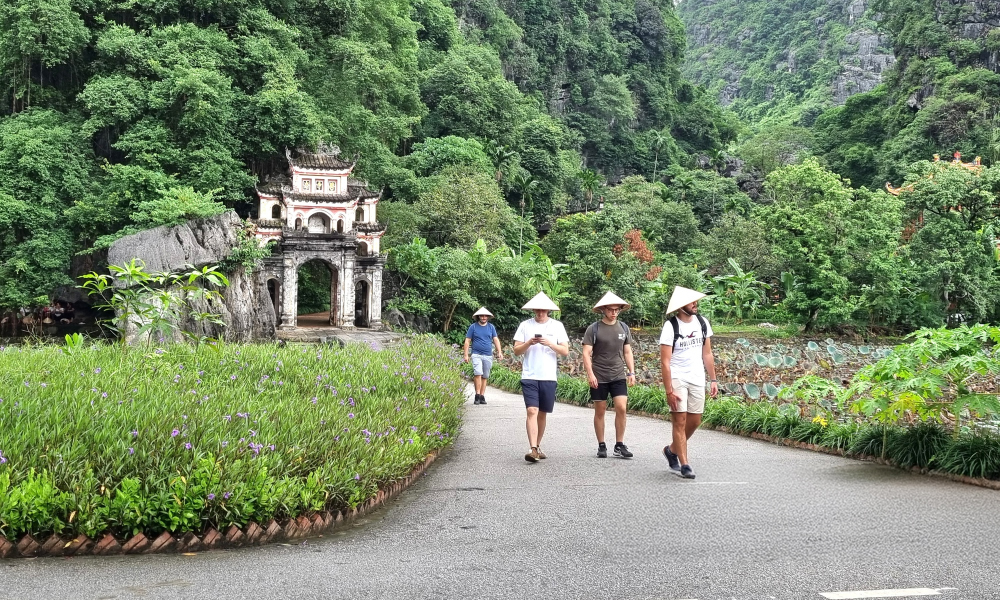
Although Bich Dong Pagoda was constructed in 1428, it wasn’t until 1705 that two monks, Tri Kien and Tri The, repaired and rebuilt it to create the modern Bich Dong Pagoda.
In 1707, the two monks finished casting a big bell, which is still hanging in the Dark Cave between the Trung and Thuong Pagodas. Originally called “Bach Ngoc Thach Son Dong,” the pagoda was then renamed “Bich Dong” (green cave) by Lord Trinh Sam in 1774.
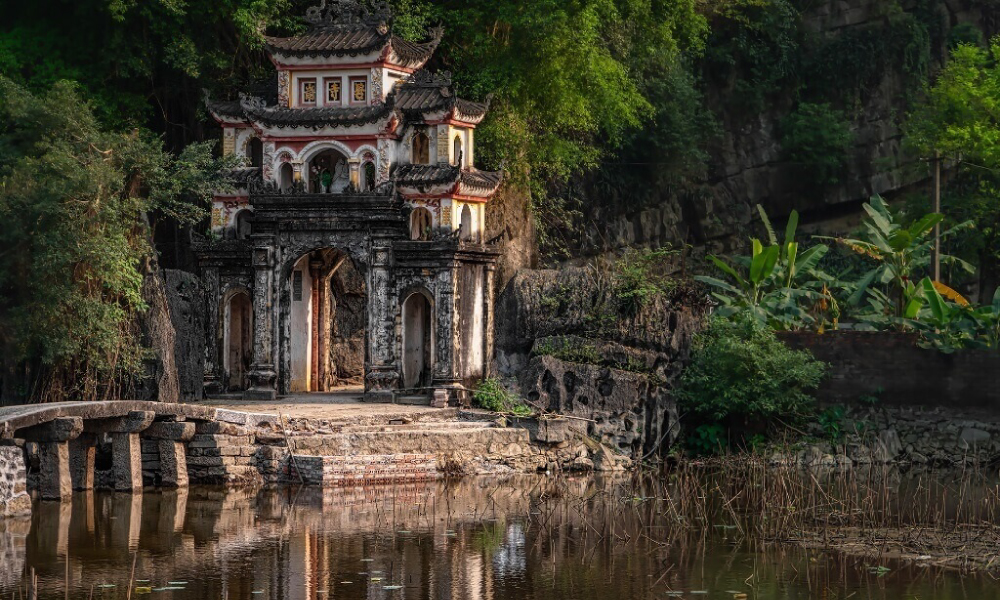
In 2012, the Trang An Scenic Complex, including the Bich Dong Cave and Pagoda, was ranked as a special national monument, and in 2014, it was recognized by UNESCO as a world cultural and natural heritage.
The Bich Dong Pagoda is situated in Dam Khe village, Hoa Lu district, Ninh Binh province. Since the pagoda complex is located in the Tam Coc – Bich Dong tourist area, the pagoda complex is accessible by bus, cab, or train from Hanoi and Ho Chi Minh City.
See more: Directions to Ninh Binh.
After traveling from the heart of Ninh Binh city to Tam Coc – Bich Dong, tourists will purchase tickets for boat rides along the Tam Coc River to visit Bich Dong Pagoda, and simply enjoy the unique beauty of nature here!
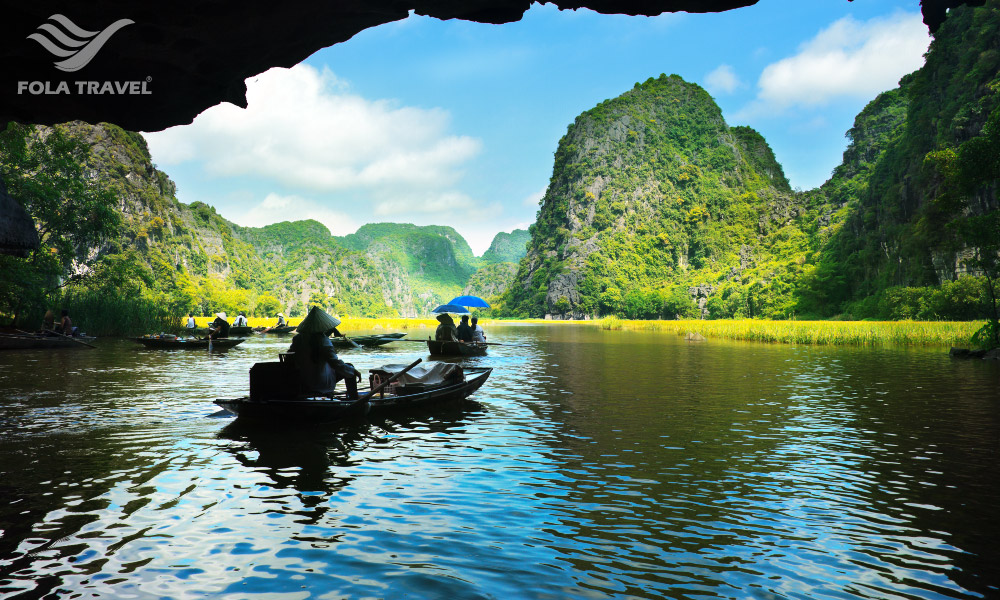
Although Bich Dong Pagoda was constructed using the Tam-shaped construction typical of old Vietnamese pagodas, the incorporation of the mountains and caverns here makes it stand out among other pagodas in Ninh Binh.
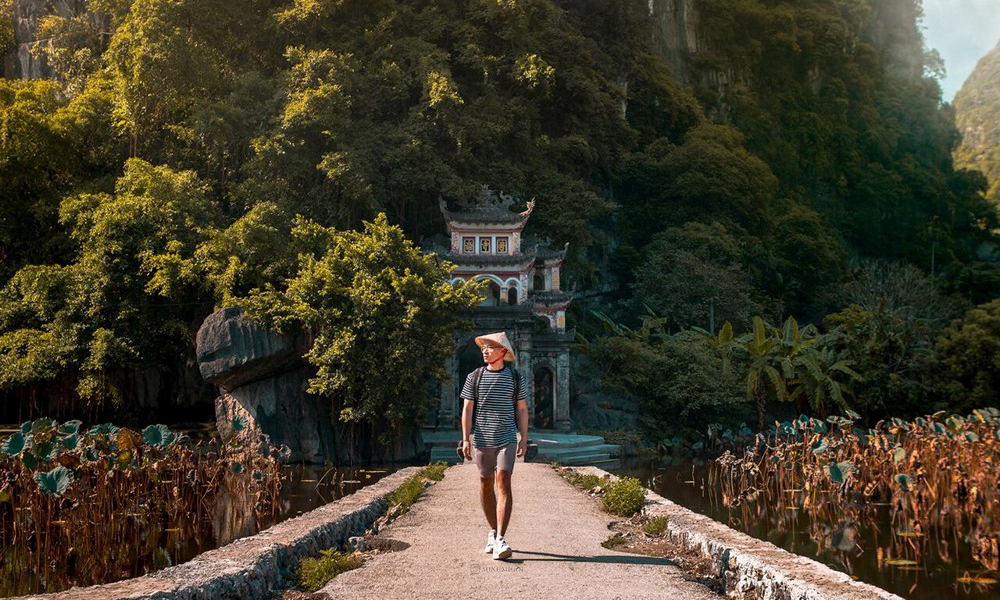
Tam-shaped architecture can be simply understood as the pagoda complex is divided into three separate blocks and built parallel to each other, like three straight lines. These three pagoda sections are Ha Pagoda (below), Trung Pagoda (in the middle), and Thuong Pagoda (above), all built along the slope of Truong An Mountain. From afar, Bich Dong Pagoda is surrounded by green mountains and forests, like a precious gem waiting to be discovered.
Walking down the stone walk with lush flowers and plants on both sides, tourists will notice the enormous Tam Quan gate that leads to the Bich Dong Pagoda.
The Tam Quan gate is distinguished by its delicate and graceful curved-roof construction, which stands out in the midst of the lyrical nature. In front of the temple gate, there is a small pond that blooms with fragrant lotus flowers every summer, adding to the beauty and charm of Bich Dong Pagoda’s surroundings.
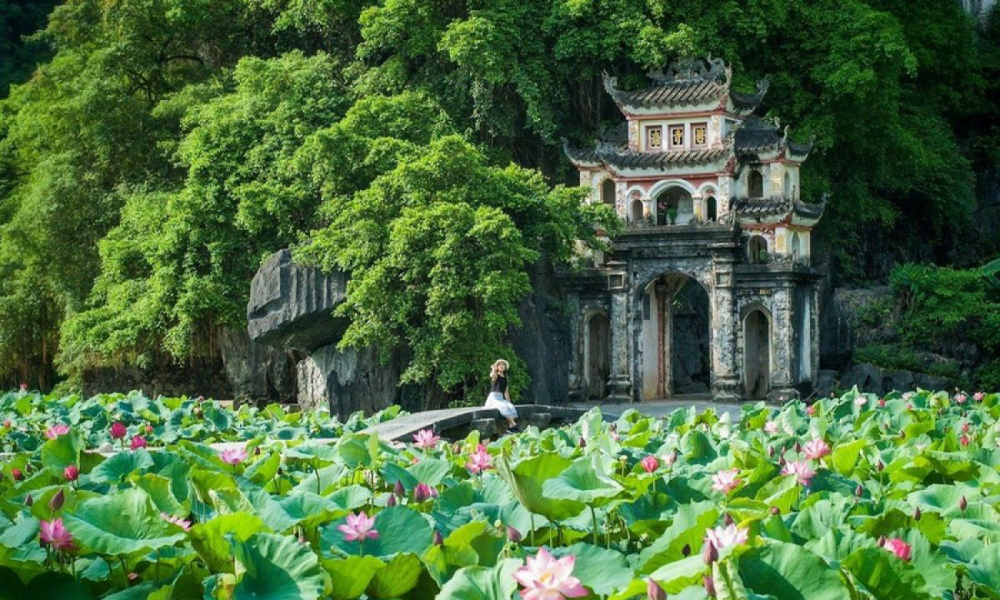
It is not difficult to see why this entrance is a popular photo location for travelers visiting the Tam Coc – Bich Dong tourism region!
Visitors may access Ha Pagoda in the Bich Dong Pagoda complex by passing through the Tam Quan gate and following the 55-meter-long trail up the mountain.
This pagoda was built in typical Vietnamese style, with five shrines dedicated to Buddha sculptures. The exquisite wooden pillars are delicately carved, and the extravagant curving pagoda roof system brings a solemn appearance to the pagoda.
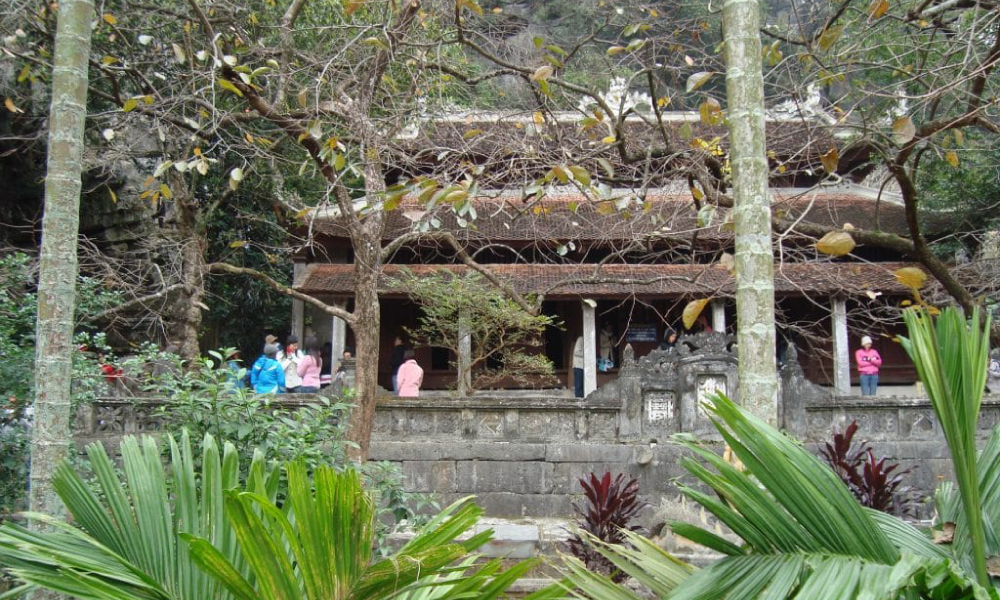
From Ha Pagoda, visitors continue up 80 stone steps to the North to reach Trung Pagoda, which lies halfway up Truong Yen Mountain. This remarkable pagoda was constructed inside the mountain, with just the roof and pagoda entrance visible from the outside, providing visitors with a unique experience.
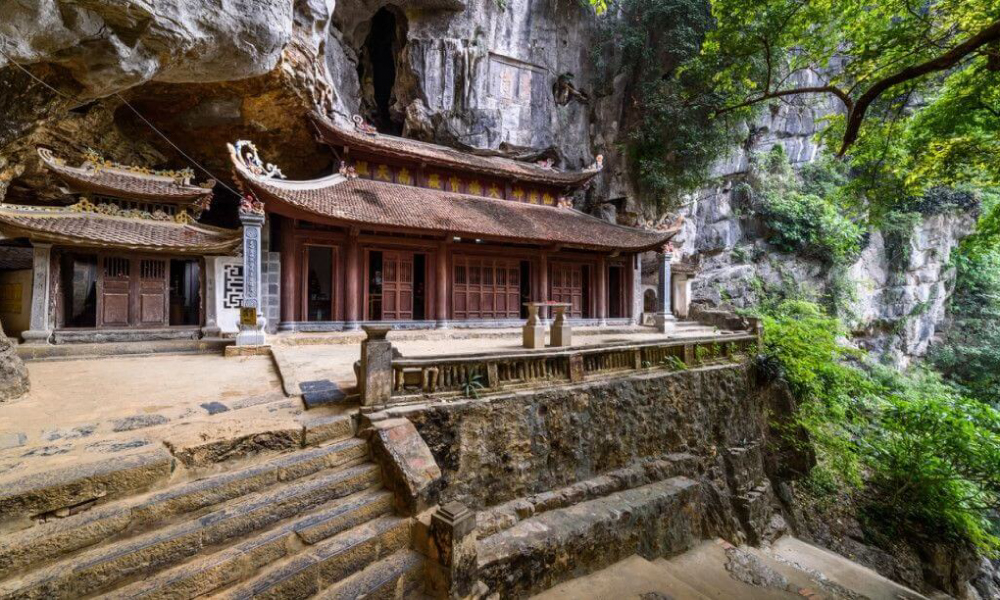
On the gate of Trung Pagoda, the Chinese letters “Bich Dong” from the period of Lord Trinh Sam are still visible. Inside, the pagoda is separated into three chambers for worshipping Buddha and the Holy Mother.
Visitors can come here, burn incense, and pray for health, luck, and happiness!
Thuong Pagoda is located at the highest position in the Bich Dong Pagoda complex, connected to Trung Pagoda by 40 stone steps to the top of the mountain. The pagoda was built with two longitudinal houses and a curving roof like a bird soaring.

Thuong Pagoda is where Guanyin Buddha, Mountain and Land Deities are worshipped. In addition to the major worship halls, Thuong Pagoda contains a small well and an open pagoda yard with a panoramic view of the Tam Coc mountains and forests.
In the middle of Trung Pagoda and Thuong Pagoda, there lies Toi Cave. This is a magnificent limestone cave where you can admire the stalactites and witness the ancient bronze bell cast in 1707.
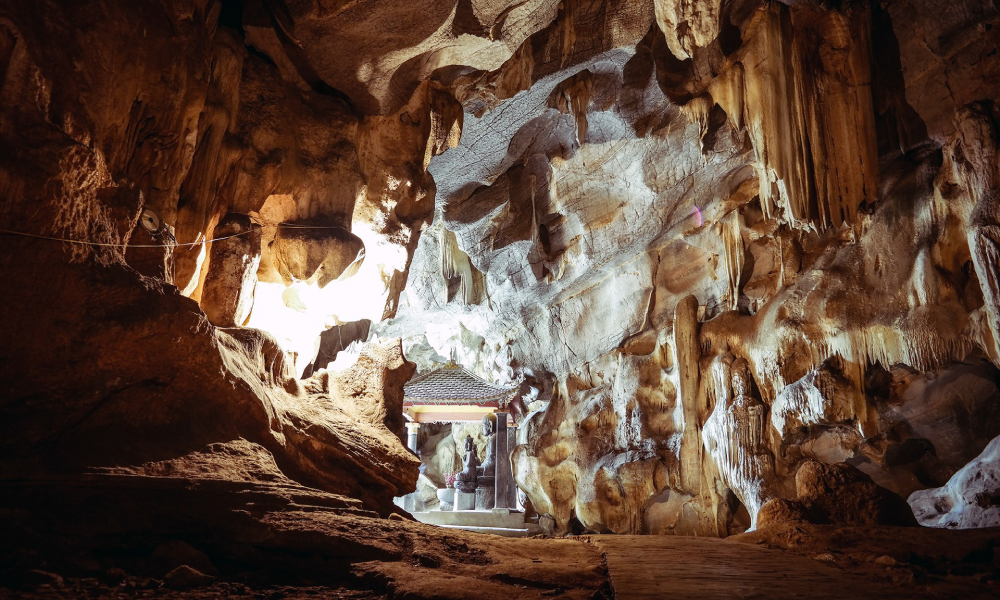
Xuyen Thuy Dong is a long, crescent-shaped water cave that runs through Truong Yen Mountain and along the Bich Dong Pagoda above. Xuyen Thuy Dong Gate is positioned opposite the route to the pagoda, therefore tourists to Tam Coc will take a boat through this cave and then ascend the mountain to see Bich Dong Pagoda.
Bich Dong Pagoda is more than just a sacred pagoda; it is also a piece of art that combines nature and human’s artistry, drawing all tourists to learn about Vietnam’s unique cultural heritage.
Tam Coc is the primary attraction of the Tam Coc – Bich Dong Tourism Area, which has water caverns hidden behind rugged limestone rocks. Visitors may take a boat and have a relaxing time drifting around the lake in the beautiful natural surroundings.

Mua Caves is an exceptional site with stunning mountains and surroundings. The Mua Caves overlook offers a breathtaking perspective of the Tam Coc – Bich Dong Eco-tourism Area.

Thung Nham Bird Park is part of the Thung Nham Eco-tourism Area, which is a breathtaking setting that contains not only a large-scale bird habitat and a poetic river system, but also unique outdoor leisure areas, including camping grounds and flower gardens.
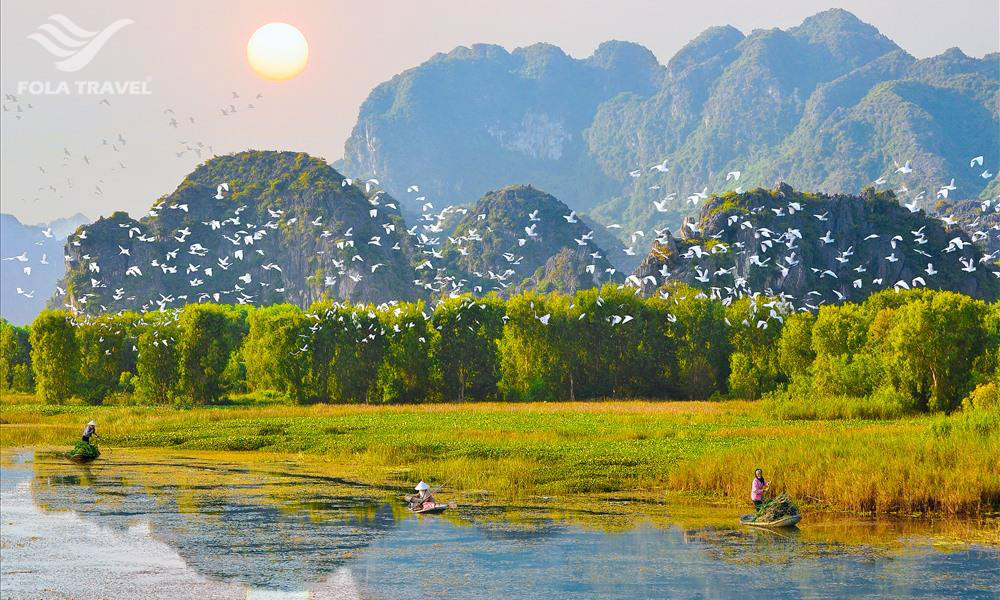
This is a unique spiritual destination in Tam Coc, where you may learn about Ninh Binh’s history and culture.
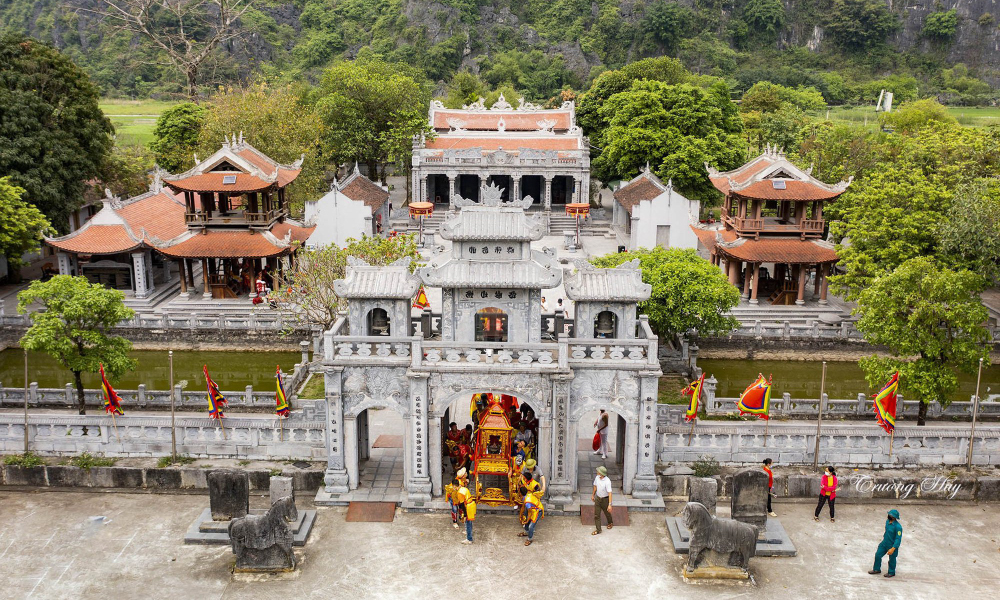
SHARE YOUR OPINION